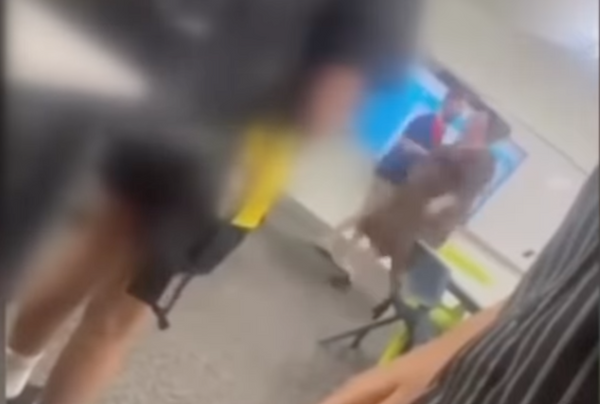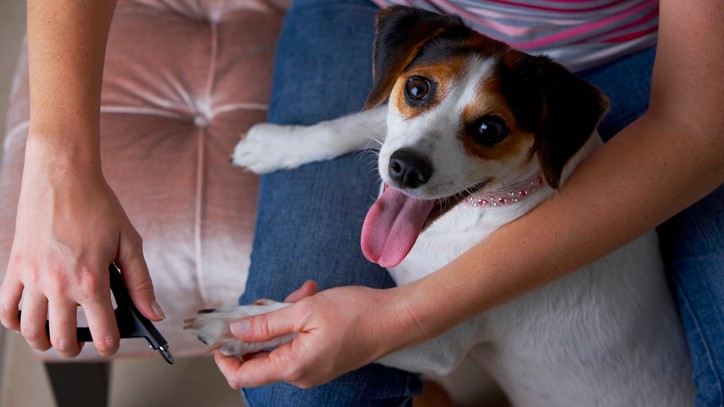
How do you clip a dog’s nails? A question many dog parents have asked themselves. If you are clipping your dog’s nails at home you’ll want to read our vet’s guide on all the ins and outs of clipping your dog’s nails at home.
This complete guide includes the equipment you will need (hint, hint the best dog nail clippers), how to tell when it’s time to trim your pup's nails, and of course how to cut your dog’s nails without hurting them.
Let’s get into it.
What equipment do you need?
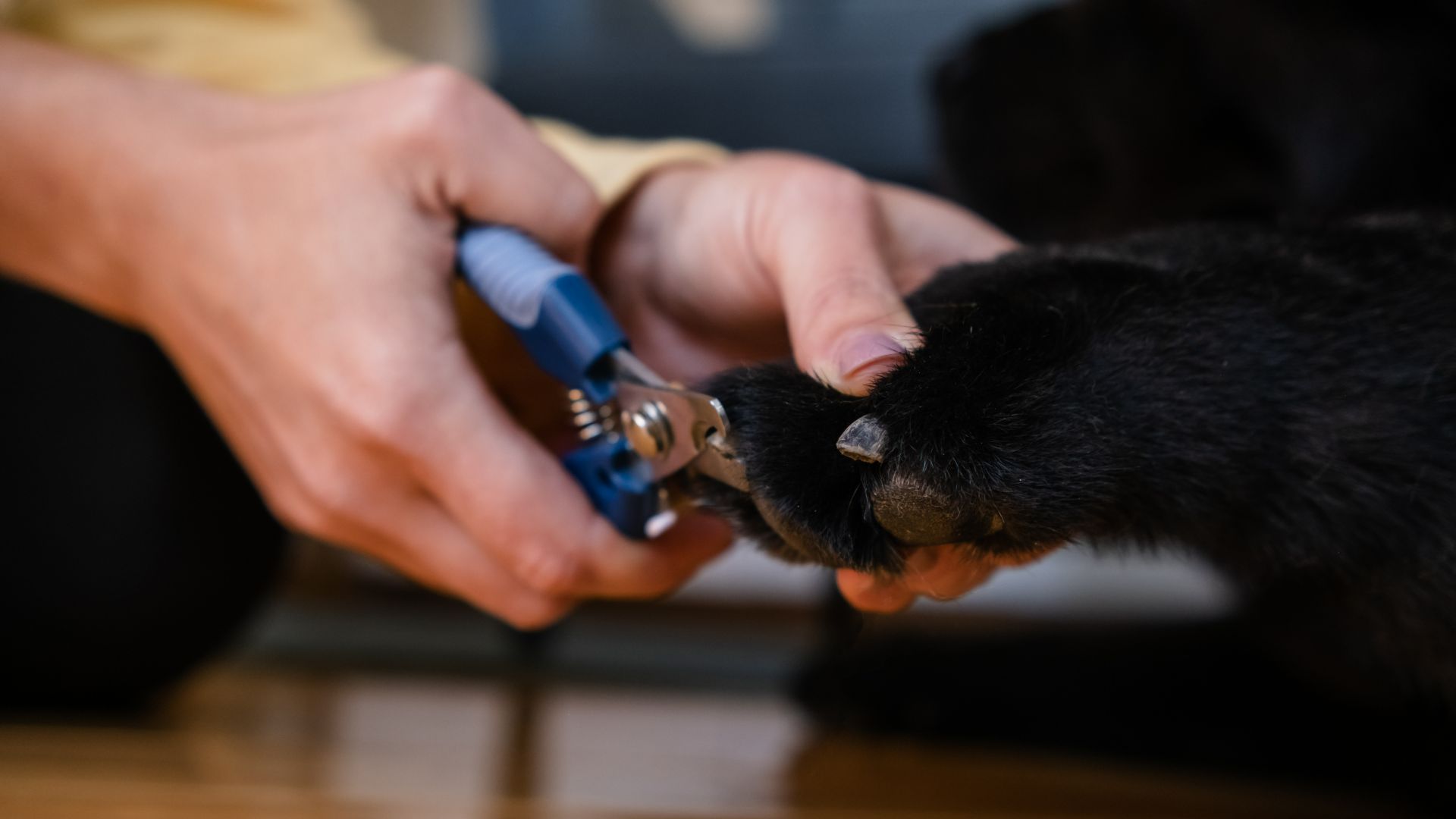
Cutting your dog’s nails will be a lot easier if you have the right equipment. First, you will need dog nail clippers. Dog claws are a lot thicker and stronger than human nails, so you’ll need specialist nail clippers. There are bypass clippers and guillotine clippers – both are suitable, but vets tend to prefer the bypass type. If you are using guillotine clippers you can check out this guide on How to use guillotine dog nail clippers.
The clippers need to be exceptionally sharp, and you’ll need to replace them or have the blades sharpened if they get dull. Some clippers come equipped with a light on them – this can be helpful to see what you’re doing. You’ll also find clippers with guards, which can be handy, especially if your dog wriggles at the last minute, though they shouldn’t be relied upon to protect your dog.
If your dog has black nails, you can talk to your vet about purchasing a styptic pen. These caustic pens (also available as styptic powder) help to stop bleeding, which can happen if you catch your dog’s quick (the pink inside part). Again, they’re not fool-proof and can’t necessarily be relied upon, but they’re helpful to have to hand as a first-aid measure.
You will also need lots of the best dog treats, and you might want to ask somebody else to hold your dog, at least the first few times!
How to tell if your dog’s nails need trimming
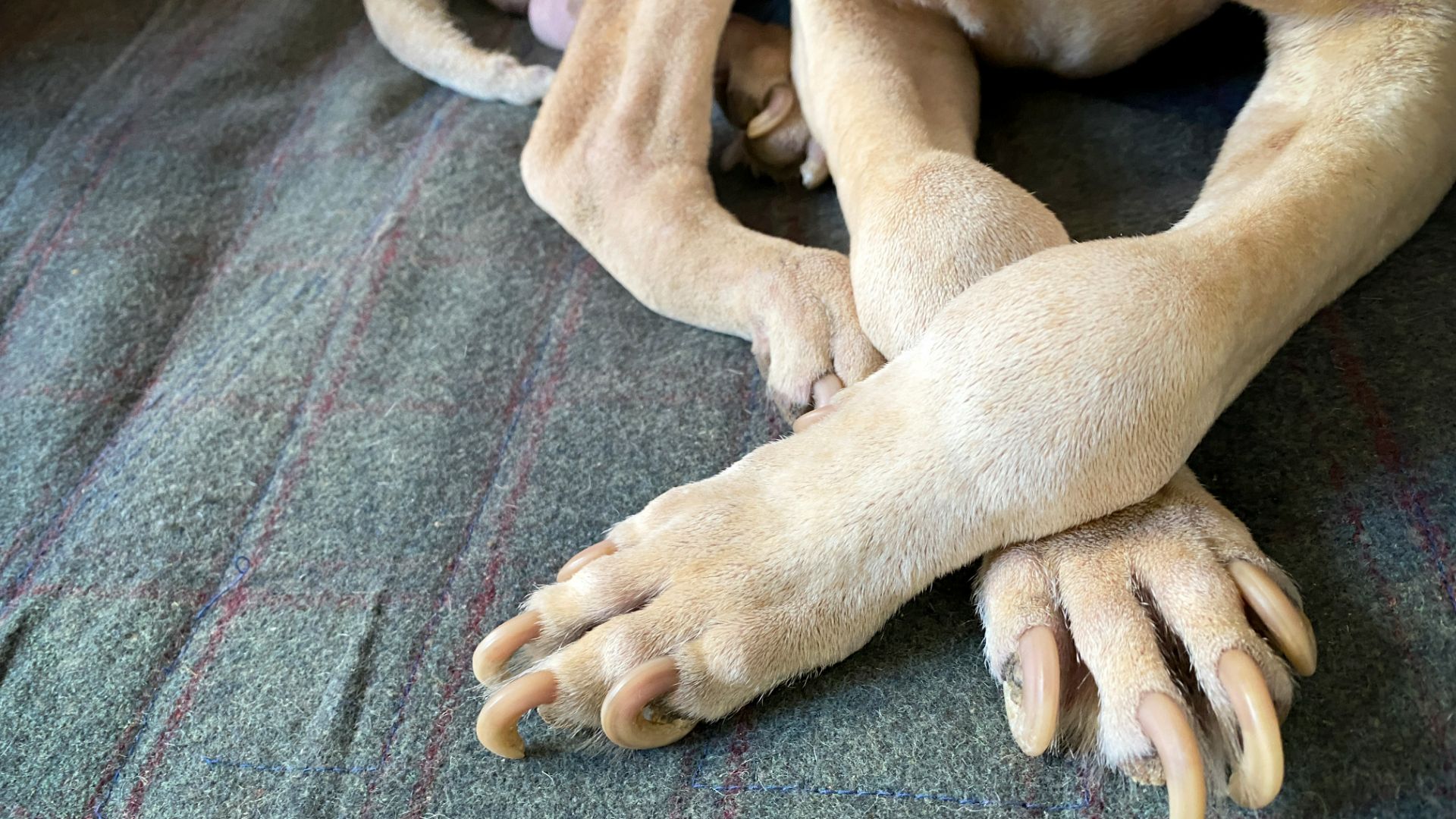
Not all dogs will need their nails cut. It depends on their age, breed, size, and lifestyle. In general, larger dogs have stronger nails that aren’t easily worn down. As dogs get older, their nails are often in less good condition, may wear less quickly, and be more prone to catching and breaking. Dogs that do more walking on the road may also need their nails trimming less often.
First, look at your dog’s paws with their feet on the ground. If the nails don’t touch the ground, they probably don’t need trimming. If they do, take a closer look at your dog’s claws, on all four paws. Are the pads being pushed off the ground by the claws? Are the claws straight, or crooked? The back claws generally need trimming less than the front, so don’t be surprised if these are fine.
And don’t forget to check your dog’s dew claws – their ‘thumbs.’ The dew claws are a little way off the ground and on the inside of the leg – you may have to feel for them if you have a long-haired dog. Most dogs only have dew claws on the front legs, but you should check the back ones if your dog has them or if you aren’t sure. Because these don’t contact the ground, they don’t get worn down and should be regularly checked.
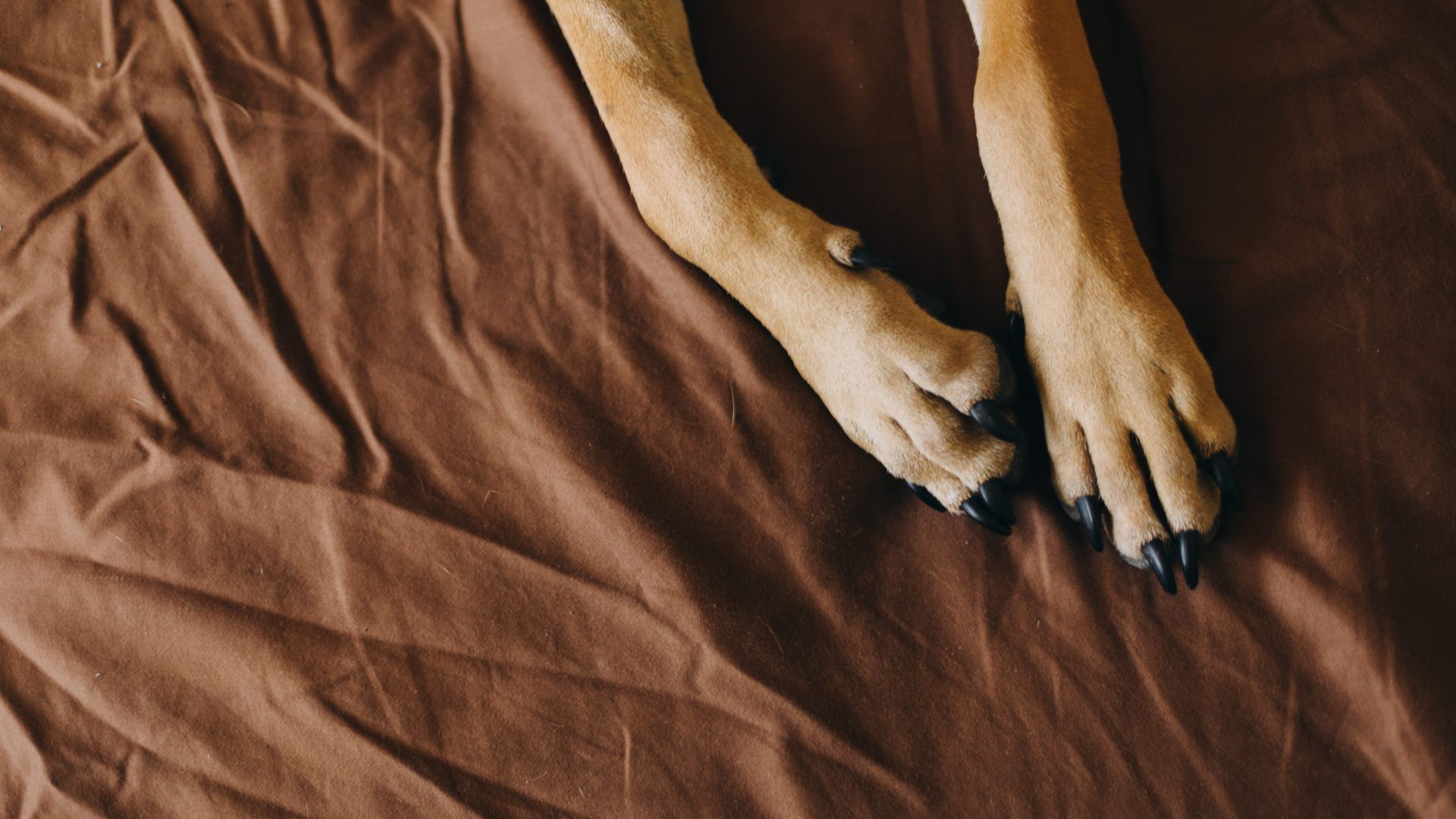
If your dog has white claws, you can see the pink part (the quick) inside. This carries the blood and nerves to the nail and should not be cut. Now it’s a judgment matter: does your dog have enough nails that have grown past the quick that it needs cutting? This depends on the dog, but in a small breed, I would say that more than 5mm (0.2 inch) past the quick should be cut. For a large breed, 1cm (0.4 inch) of growth past the quick is a sign that the claw needs cutting.
If your dog has black nails that need cutting, your job is slightly harder. Since you can’t see the quick you have to make a judgment based on how long the nails look, whether you can hear them clicking, and whether they’re curving enough to risk them growing back into the pad. You can also try trimming small amounts from the nail until you see the pulp, which tells you where the quick is.
If you trim a lot of nails before you reach the pulp, the chances are that most of the nails need trimming. Remember, though, that every nail is different, with varying lengths of quick, so don’t dive into doing the next one just as short.
How to cut your dog's nails
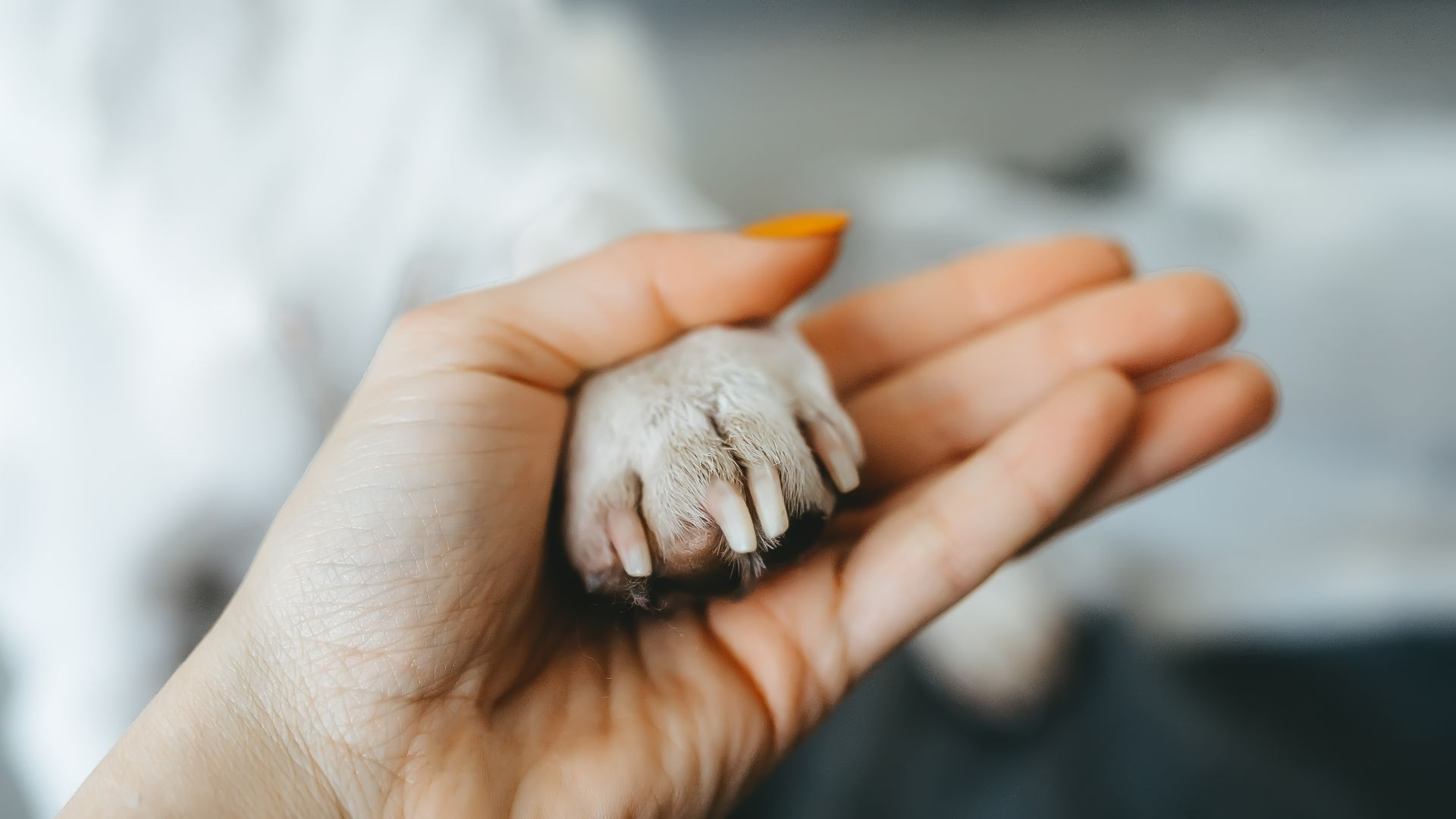
It might be tempting to ambush your dog, but it’s not a good idea to do something mildly unpleasant while they’re sleeping or relaxing. Instead, choose a time when you have long enough to do it properly and approach them calmly – try not to call them towards you, as this may make their recall worse. You should then hold your pet firmly but gently; it might be easier to have someone help you with this, but it’s perfectly possible to do it with one person if your pet is relaxed.
It’s usually easier to bend your dog’s paw naturally so that it is upside down, paw pad upwards. This can make it easier to see the underside of the nails, which should be helpful. Push the fur out of the way and look closely at your dog’s nails. If your dog has white nails, you’ll be able to see the pink ‘quick’, which is the blood supply to the nail. If your dog’s claws are black, you won’t be able to see the quick, and you’ll have to look closely to assess where it appears to be and trim a bit at the time until you reach the ‘warning sign’ of the pulp.
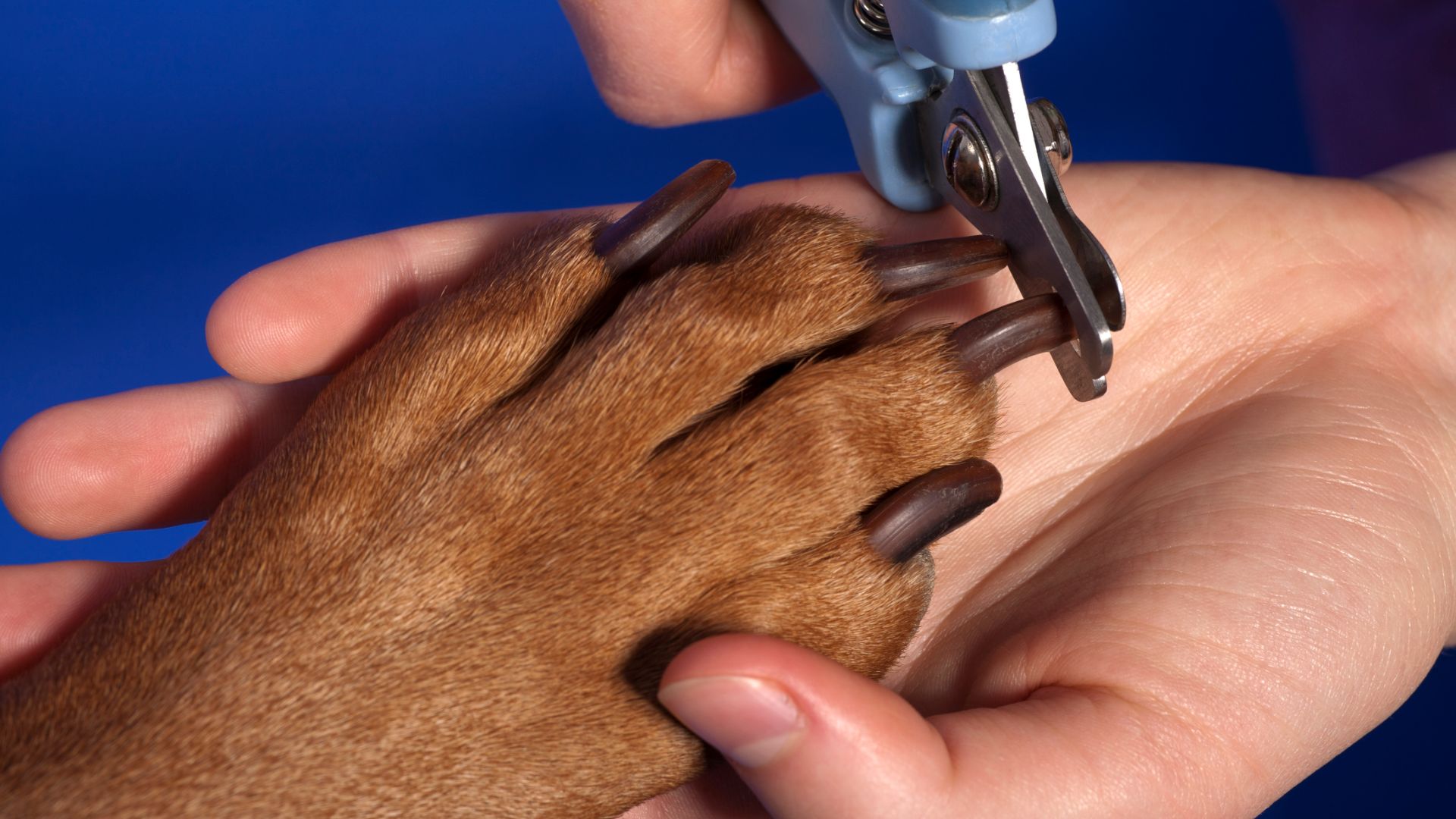
Position the clippers over your dog’s nail at the point you wish to cut. For a white-nailed dog, this should be at least 3mm (0.1 inch) away from the quick. For a black-nailed dog, just take a tiny amount to start with. Clip quickly and assertively, being prepared for a last-minute wiggle from the dog. (Clipping the nails isn’t painful as long as you avoid the quick, but sometimes the squeezing pressure feels strange. Having sharp clippers helps to avoid this.)
You can cut the same claw several times if needed, but if you see a black dot appearing in the center of the cut part of the claw then you should stop, as you’re about to hit the quick. Don’t forget to assess and trim any other claws that are too long.
What if I cut my dog’s nails too short and they bleed?
If you cut your dog’s nails too short and cut into the quick, your dog will probably struggle and cry, and the nail will quickly start to bleed. Don’t panic – although it’s messy, your dog will be fine. Try to calm your dog down and take a look at the nail to assess the situation. If you’ve cut near the nail base, or accidentally cut the skin because your dog wriggled, you should pop them to the vet for assessment, pain relief, and to have a bandage fitted.
If you’ve only caught the edge of the quick, you may be fine with home care. A caustic pen comes in handy, especially if you have a black-clawed or wriggly dog. Remove the lid, and apply the silver nitrate pen to the bottom of the claw where the bleeding is occurring. Hold it in position for at least 10 seconds, or until the bleeding stops, then leave it for several more seconds to dry before letting your dog get back down. Beware that the caustic pen stings a little – your dog may struggle, so finding someone else to help hold them for this may be a good idea.
If you can’t stop the bleeding after 10 minutes of trying, it’s time to visit the vet. Treat the cut claw as you would any wound: don’t let your dog lick it, and keep it clean, bathing it if necessary after a walk.
Desensitizing your dog to having their nails trimmed
Struggling, crying, and even growling: sound familiar? Not all dogs are comfortable having their nails trimmed, and what should be routine quickly grows into a chore. Instead of plowing on regardless, you should respect your dog’s fear and work with them to show them that it’s OK.
The way to do this is by slowly building up their tolerance to having their nails trimmed, just like you do for a puppy. Start with simply getting them used to having their feet handled, with lots of treats and praise. Once they’re 100% comfortable with this, try fiddling with the nails themselves, again giving plenty of praise. Over several weeks, and with lots of positive reinforcement, you need to teach your dog that having their nails trimmed is actually fun!
Turning fear into fun can be slow work, and it’s important that during this time you don’t push your dog too far, so make sure that their nails are clipped short (perhaps under sedation at the vet) before you start desensitization, giving you plenty of time to teach them coping mechanisms. A canine behaviorist may be of help to you, especially if your dog is scared enough to growl. Please take care if you have a fearful dog – they’re asking you to stop, but they might panic and snap if you try to carry on regardless.
If you found this feature helpful check out, How to cut dog nails without clippers.
